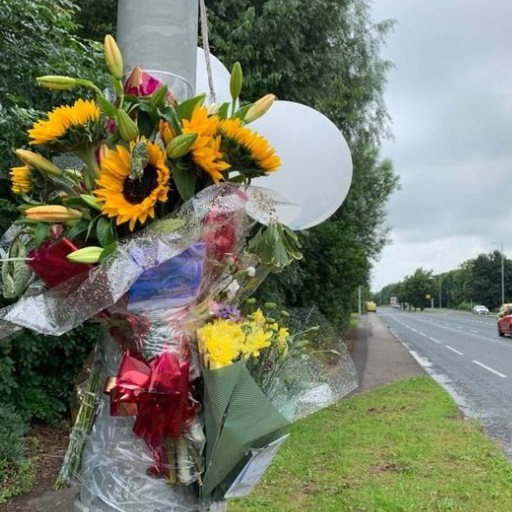The Power of Roadside Memorials
You may have seen them before—small crosses, flowers, or personal items carefully placed on the side of the road. These simple but powerful memorials mark the spot where a life was lost in a tragic accident. While some may see them as just decorations, roadside memorials hold deep meaning for grieving families and communities. They serve as a tribute to lost loved ones, a reminder of the dangers of the road, and a way to bring people together in support and reflection.
Beyond honoring those who have passed, roadside memorials have a bigger purpose. They raise awareness about safe driving and remind people to slow down, stay alert, and be cautious. These memorials can even lead to changes in traffic laws or improvements in dangerous road conditions. Despite some controversy over whether they should be allowed, many believe they serve a valuable role in both healing and public safety.
Understanding why roadside memorials exist and the impact they have can help us appreciate their significance. Whether you’ve lost someone or simply want to be a more mindful driver, these memorials remind us that every life matters.
A Personal and Meaningful Tribute
For families who have lost a loved one in a sudden accident, roadside memorials offer a place of comfort and remembrance. Losing someone unexpectedly can be overwhelming, and creating a memorial allows family members to express their grief in a visible, personal way. Unlike a cemetery, which may feel distant or formal, a roadside memorial marks the exact location where a person took their last breath, making it deeply meaningful for those left behind.
These memorials also provide a way for friends and the community to show their support. Placing flowers, candles, or personal mementos at the site lets others know that the person is not forgotten. Many families visit these sites regularly, finding peace in maintaining the memorial and reflecting on their loved one’s life.
In a world that often moves too fast, roadside memorials serve as a lasting tribute, ensuring that those who passed away are remembered in a way that feels close, real, and meaningful to their loved ones.
Raising Awareness About Road Safety
One of the most important reasons for roadside memorials is their role in reminding drivers to be careful. Seeing a memorial along a highway or busy road makes people think twice about their own driving habits. It’s a powerful, real-life warning that accidents happen, and that a single mistake can cost a life.
Many memorials are placed at locations known for frequent accidents. This can help local officials recognize dangerous intersections or roads that may need better lighting, speed limits, or warning signs. In some cases, roadside memorials have even led to new laws, such as stricter drunk driving penalties or better pedestrian crossings.
These memorials don’t just raise awareness for drivers—they also serve as an educational tool for new and young drivers. Parents often use them to teach their children about the importance of staying focused on the road. When people understand the consequences of reckless driving, they’re more likely to drive safely, reducing the chances of future accidents.
Community Connection and Healing
Beyond grieving families, roadside memorials can bring entire communities together. When a tragedy strikes, it affects more than just the immediate family. Friends, neighbors, and even strangers may feel the loss. Roadside memorials create a place where people can come together, share stories, and find comfort in knowing they are not alone in their grief.
These sites also encourage open conversations about loss and healing. For many, discussing death is difficult, but seeing a roadside memorial can inspire people to talk about their feelings and support one another. Memorial gatherings at these locations often become moments of remembrance and unity, helping both individuals and communities process their emotions.
Grief can be isolating, but when people come together at a memorial site, they find strength in shared experiences. Whether it’s through lighting a candle, leaving a message, or simply standing in silence, roadside memorials help create a sense of healing and support that extends beyond the immediate family.
A Lasting Legacy Beyond a Traditional Memorial
Unlike traditional funerals or cemetery visits, which are private, roadside memorials stand as a public acknowledgment of a life lost. They offer a way for a loved one’s memory to continue beyond a single day of mourning. Every person who drives past sees a reminder that someone’s life ended there, reinforcing the importance of road safety and remembrance.
For many families, these memorials provide ongoing comfort. They return to the site to celebrate birthdays, anniversaries, or simply to feel close to the person they lost. This continued connection is a vital part of the healing process, allowing loved ones to honor and remember in a way that feels personal.
Roadside memorials also inspire acts of kindness. Some people, even those who didn’t know the person, leave flowers or notes, showing that a stranger’s life was valued. This creates a ripple effect of compassion, reminding us all that each life is precious and worth remembering.
Honoring Lives and Promoting Safety
Roadside memorials are more than just small tributes along highways. They represent love, remembrance, and awareness. They give grieving families a place to heal, remind drivers to be cautious, and help communities come together in support.
Have you ever come across a roadside memorial that moved you? What are your thoughts on their role in honoring lives and promoting road safety? Feel free to share your thoughts or experiences in the comments.


